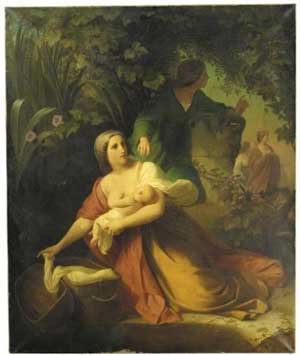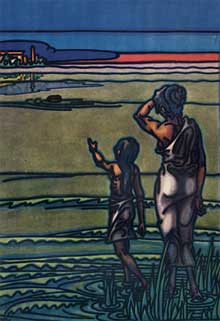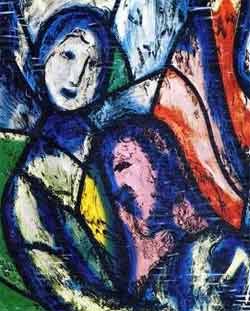|









|
|
- Woman, water and life
-

|
Three women: Moses' mother did not drown him as ordered by
Pharaoh, she hid him and left him under the protection of the
river for a better future; |
-
- Miriam, Moses' sister, she watched him going along the
river to see what would become of him; finally Pharaoh's daughter,
she was taking a swim when she saw the child, had pity for him,
saved him and gave him the name of "Moses" which means
"I took him out of the waters".
When the Hebrews fled Egypt, with its bitterness, and when the
Egyptians were swallowed into the waters, Miriam went out with
all the women, playing tambourine: " Acclaim to the Lord,
He has done marvellous things" (Ex. 15, 20, 21).
Miriam is a prophet because she resists to the discouragement
of many, and can go where there is life. A protester, she will
not be lenient with her brother: " God spoke to us as he
did to you!" (Nb, 12, 2). She became leprous for her audacity,
"white as snow" (Nb. 12, 10) and being expelled for
seven days, "the people did not leave until she had again
took her place among them".
|
All major events of Miriam's life were associated with water.
A tradition relates that a well, "Miriam's well", was
following the people in the desert. At Miriam's death the well
disappeared. She seemed to have taken with her the sign that
accompanied her during her life. |

|
-
- At his sister's death Moses seemed to take conscience
of what Miriam's life meant for the people. If water was running
at will to quench their thirst, perhaps it was because during
her seven days of confinement, she had a renewed relationship
with God. God was present among His people like a spurting spring.

|
It is probably for all these reasons that the first Christians
saw Miriam as a figure of Mary, mother of Jesus, the new Moses.
|
|
